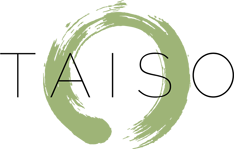Recently a friend remarked that modern fitness practice came from the practice of gymnastics. I don’t know if this is true, and I wasn’t interested enough to attempt anything but cursory research. But it did get me thinking about something similar I had heard in the past. That most sports and fitness across a variety of cultures can be traced back to that cultures style of warfare. In other words, the preparation and practice of human conflict was the driver for the rote repetition of skills necessary for people to fight together.
For now, let’s assume this statement is accurate and look at the original olympics as practiced from 777BC to at least 393AD. The only sports were military skills; boxing, wrestling, penkration (anything goes fighting, except for biting and eye gouging), running (with and without armor), long jump, javelin, discus, and chariot racing. The olympics as we know them today were reinvented at the end of the 19th century.
The overall purpose of the movement practice was the defense of the nation. The “games” reflected the skills needed for that defense. In order to do well at the games you needed technical skill practice, as well as attribute training such as strength, endurance, coordination, etc… But there was a unified movement goal far bigger than being a “runner”, or a “weight lifter”, or any other repetitive action we now think of in the world of “fitness.”
Throughout my life I have had a variety of movement practices to enable me to participate in other activities such as rock climbing, parachuting, scuba-diving, hiking, biking, and a variety of martial arts practices. My personal measure of fitness changed based on the activity I was focused on at the time.
When I meet a new client and ask what their goals are, the most common answer I get is “to be more fit.” When we discuss what that means and how to measure it, the most common goal is “to do a pull-up.” How exciting and stimulating is doing rote repetition of linear movements…. for years? But this is a common expectation of fitness from many of the people I meet.
Our goal is to help our clients discover a world of possibilities. We want the time you spend with us to make you better at your overall movement and activities. We are constantly making changes to our program, pulling from our experiences, from systems we have trained in, and a variety of movement practices not traditionally associated with “working out.” We take a neurological perspective and incorporate vision and vestibular work into our programs, and incorporate play and playfulness along the way.
A client recently returned from a ski trip. She was excited to tell me how her focus had changed from speed and endurance to being able to notice more subtle breaks in her form, her knee stability, her vision, and her breathing. But she was even more excited because now she understood how these were the things that would improve her speed and endurance.
She had found movement with a purpose.

